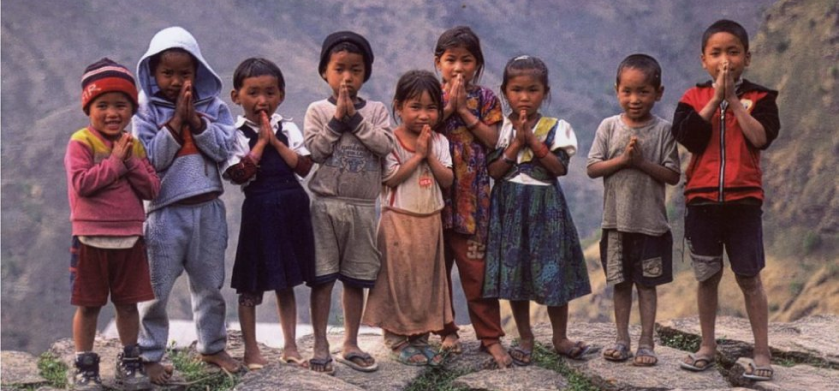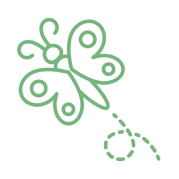31 Jul, 2023
Children remain easy targets for sexual abuse and exploitation in a country like Bangladesh, where poverty, gender inequality, natural disasters, lack of education and economic alternatives prevent them from receiving the protection and care they need.
According to international NGO estimates, child trafficking affects more than two million children a year, including one million in Asia. Bangladesh has emerged as one of the major source areas of child trafficking.
Photos used for illustration purposes and not depicting child victims.
The reasons for exploitation are deeply rooted in the socio-economic realities of the country. Often linked to the mafia, traffickers in Bangladesh target children in the poorest and most isolated villages, marked by lack of information and education, poverty and a high birth rate. Children are most often trafficked by people close to the family. In addition, child trafficking is facilitated by the cultural context (parents marry their daughters as quickly as possible, although child marriages can lead to sexual violence), economic needs (the promise of lucrative work) and the establishment of a genuine “market” for the trafficking of children for sexual purposes, at the border, fostered by significant corruption.
Children living in street situations or at train stations, who lack family and community protection, are also targeted by traffickers. Their number in the region is among the highest in the world, the average age is 10 years, 56% being boys. Of the 5-14 age group, 18.3% (i.e. 6.3 million) work and 65% work between 9 and 14 hours a day, mostly as porters, small sellers, beggars, domestic workers and helpers for bus or truck drivers.
Child victims of sexual exploitation are highly vulnerable to sexually transmitted diseases (STDs), AIDS, depression, drug abuse and alcoholism. Several cases of underage prostitute suicides occur each year. While most of the clients of prostitution establishments are local nationals, there is also a growing demand from sex and “export” tourists to India and the Middle East.
The project aims to increase access to assistance, prevention, protection, psychosocial rehabilitation and reintegration programmes for vulnerable children or victims of trafficking or sexual exploitation.
Identification and repatriation of missing/trafficked children
Prosecutions against traffickers
Setting up emergency telephone lines
Legal aid to child victims in conflict with the law
Psychosocial rehabilitation and reintegration programmes (education, vocational training, reunification with their families)
Training of social workers
Education, training and community awareness in rural areas
Literacy and educational support programmes for girls in rural areas
Microfinance activities with teenagers in rural areas
Raising awareness among law enforcement agencies, including border police, and local government agencies
Coordination and collaboration of NGO (Non-Governmental Organization) partners and other child protection actors
Development and dissemination of communication and methodology tools
Awareness and advocacy
Documentation and research on child trafficking, abuse and sexual exploitation.
Young girls in rural areas who do not go to school, who have few options for economic survival and who are particularly vulnerable to child trafficking, exploitation and sexual abuse.
Children living on the streets or in train stations in urban areas, who are victims of general neglect, abuse and exploitation
Young girls engaged in street prostitution. Finally, it is the minors trafficked to the prostitution zones and the girls who live there, who often become the second generation of prostitutes.
The education program is a great success of the project: 19 children were enrolled in the school and passed their exams. They have become excellent examples for other children. If formal education is not adapted to the needs of the child, the project offers non-formal schooling within reception centres. The project found that literacy facilitates stability and the rehabilitation process of children.
In addition, the advocacy work carried out by the project succeeded in preventing children in conflict with the law from being incarcerated with adults or beaten.
Protection
80 children benefited from shelters and foster homes every day
51 children between the age of 7 and 16 received a non-formal education
19 children received a formal education at school
7 boys have received vocational training
21 children received legal assistance
171 children received medical care
Rescue and rehabilitation
34 children were rescued from vulnerable situations
8 children were reunited with their families
78 awareness sessions were conducted and 52 children requested psychotherapeutic support
Participation
The project has launched several initiatives to promote youth participation:
Children’s Day: Once a month the children take responsibility for organising activities in the homes, assisted by staff
The children also organize a monthly meeting. They develop the agenda and write the reports with the assistance of the staff
10 young people have been selected to be peer supporters to raise awareness among their peers about children’s rights and the risks of sexual exploitation
Prevention
Development of “Security Networks” in 2 at-risk communities
Creating an Action Committee
15 young people and 12 students volunteered for the project after attending the project’s mobilization meetings
Advocacy and lobbying
6 meetings were held with the district authorities to present the objectives and achievements of the project
Project representatives were invited to attend a meeting organized by the government and UNICEF on child trafficking
The project organized a meeting in which the Mayor and the Director of Social Services participated
The Commissioner of the Local Government visited the foster home where the children shared their experiences of living in street situations. The Commissioner commended the project’s efforts and offered his support.
The price of products has increased significantly, which has had a considerable impact on the population of the country, and on the project, particularly on the budget lines for basic necessities, medical care and hygiene. In addition, the owners of the reception centres wanted to increase the rent by 40%. The project was able to persuade them to wait until the end of the lease agreement before increasing the price.
Street children living in railway stations in khulna city often suffer from drug addiction that makes them more vulnerable. The project team noted that the presence of drugs and drug dealers was particularly important in this area and drew the attention of local authorities to the problem. The police carried out raids and arrested several drug dealers. The project estimates that drug trafficking in the neighbourhood has been reduced by 80% since then.
In addition, project staff suspected that a gang in the same neighbourhood was involved in the trafficking of girls from slums by promising them work in the Middle East or India, but unfortunately there was no clear evidence to prosecute the gang. However, the project worked with local authorities to raise awareness of the community to prevent risks.
Bangladesh, ranked “the least developed country” on the list of countries receiving aid (OECD/DAC publication – Organisation for Economic Co-operation and Development – Directorate for Development Cooperation in 2001), has a population of 136.6 million, of which 49.8% live below the national poverty line. According to the 2007/2008 UN Human Development Report, which places Bangladesh 140th out of 177 countries classified according to their Human Development Index (HDI), there are 50,000 internally displaced persons. Although there are no official figures, it is estimated that hundreds of thousands of Bangladeshis have crossed the porous land border with India. Although most of these migrations are voluntary and irregular, the phenomenon has increased the trafficking of children and women on the border with India. Trafficking often occurs covered by migration for work Research also highlights the close links between poverty and the lack of economic solutions, and irregular trafficking and migration.
Mainly along the Indian border: Jessore, Jhenaidah, Meherpur, Chuadanga, Kushtia, Satkhira, Chapai Nawabgunje, Rajshahi and Naogaon
2008 – 2011


We do not show on this site any child victim of sexual exploitation. The few recognizable children are beneficiaries of our prevention actions.
3, rue des Bains - BP 848 L-2018 Luxembourg
Phone : (+352) 26 27 08 09
Fax : (+352) 26 20 06 22
ecpat-luxembourg@ecpat.lu